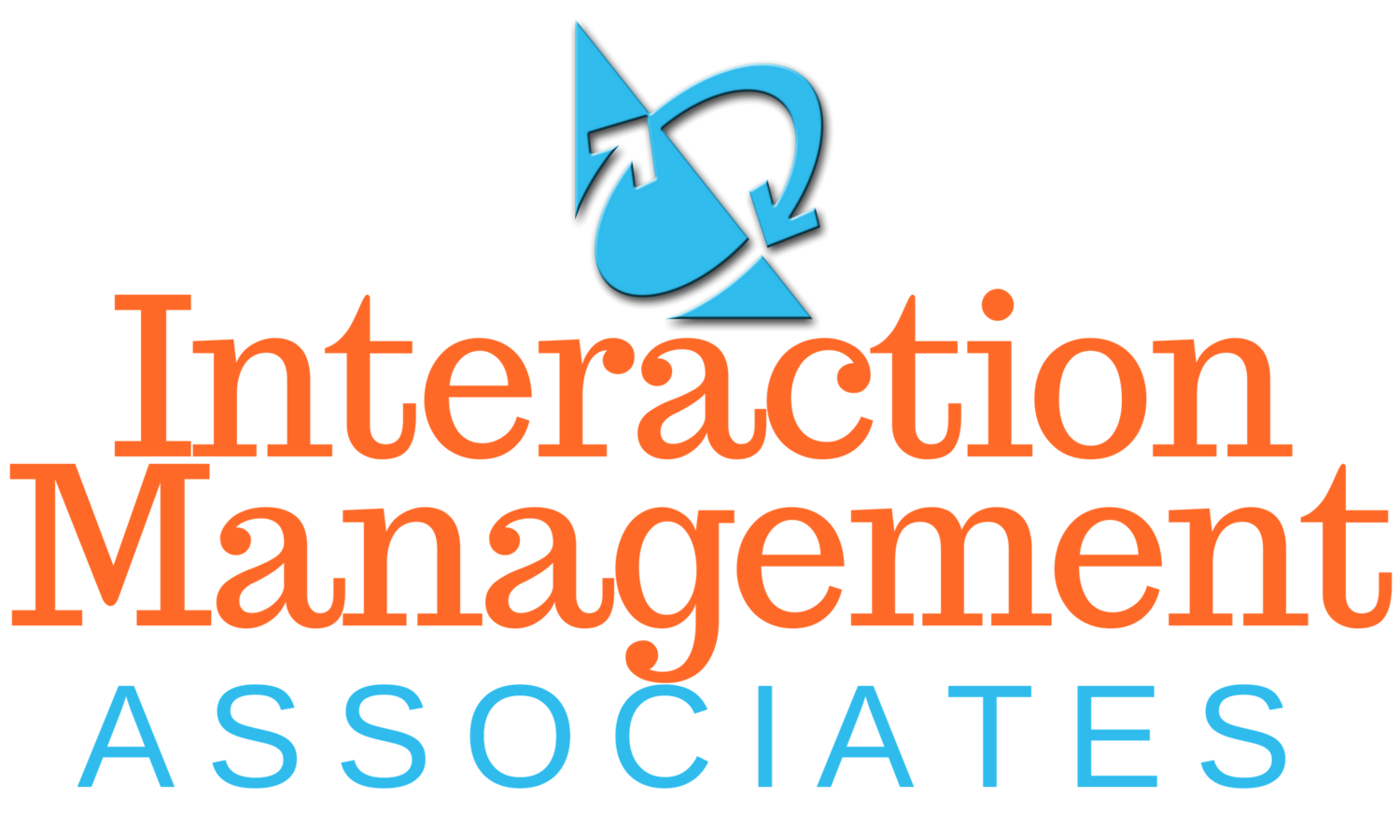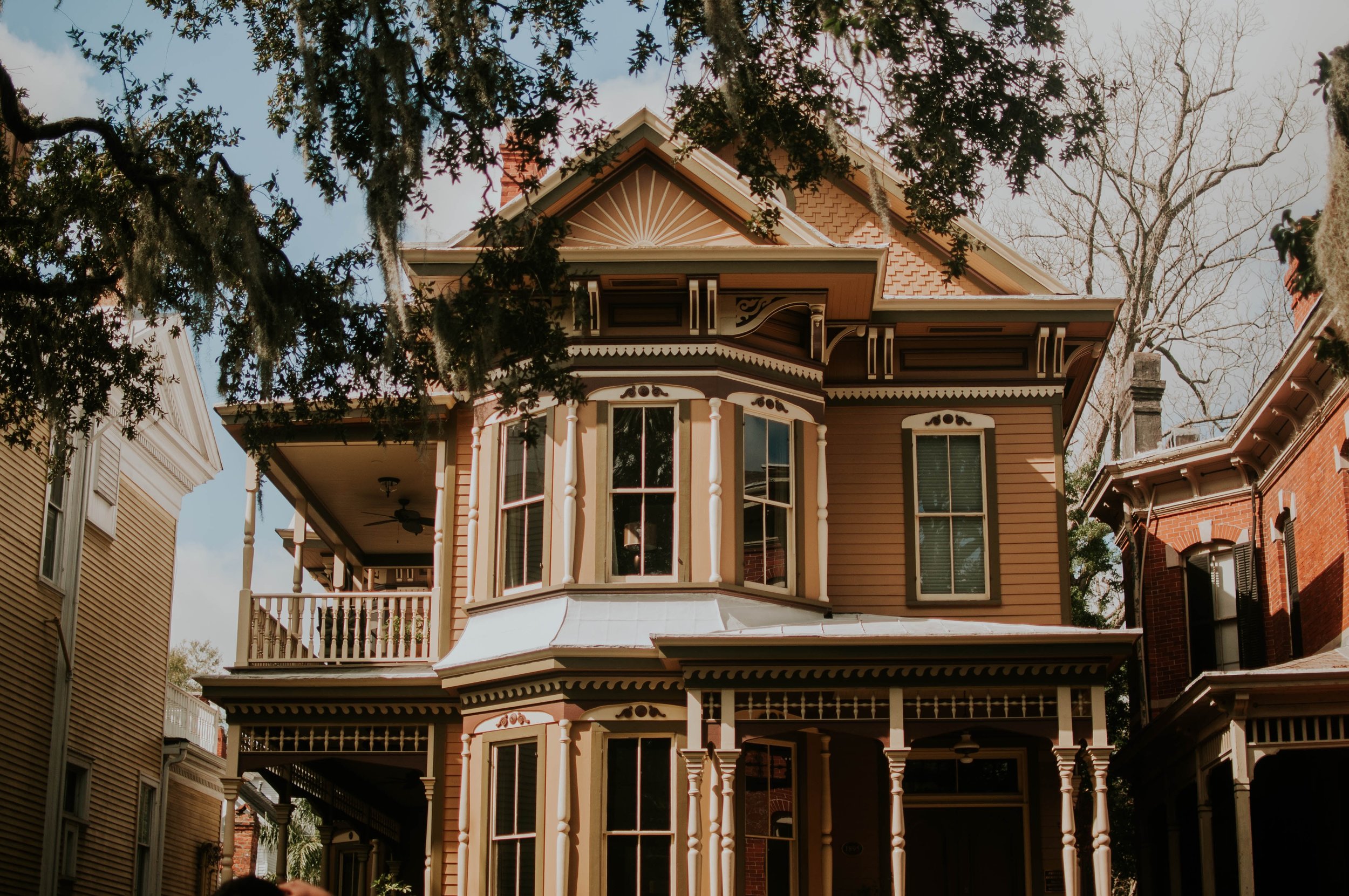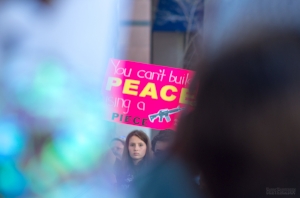In my early 20s, I wasn’t interested in school violence prevention. I had big ideas about contributing to world peace. After serving in the Peace Corps, I worked on a Master’s in international development, focused on conflict resolution. This was in the early 90s, before “Columbine” was associated with a high school massacre. An internship in the heart of America changed my worldview.
LESSON #1: PEACE CAN BEGIN ANYWHERE
Imagine a 100-year-old house, surrounded by lilacs, with a peace pole in front of its wrap-around porch. That’s where I landed a graduate internship. The little town of Grinnell, Iowa was home to the Iowa Peace Institute, an Eden for conflict resolution scholars and professionals worldwide. IPI focused on conflicts related to the Cold War, the farm crisis, and school violence. Because I had no experience in the first two, they assigned me to the school program.
First, they made me take a mediation course.
I’ll be honest, I did not want to be a mediator. I didn't see how mediation related to world peace or, for that matter, school violence prevention in Iowa. My internship began in the wake of shootings at schools in Pearl, Mississippi, and Paducah, Kentucky. I learned quickly that conflict is inescapable.
How we deal with conflict matters.
Iowa is a largely rural state, with lush, peaceful rolling hills. I grew up in Eastern Iowa, where my European immigrant ancestors prided themselves on a solid work ethic. Humble, persevering, and survivalist farmers were idealized by Grant Wood’s famous American Gothic. Iowans value the preservation of harmony. Teachers, students, and school administrators I met across Iowa had no desire to be part of the noticeable upsurge of these school shootings in rural communities.
LESSON #2: WE HAVE A STRANGE RELATIONSHIP WITH PEACE
We Iowans are notorious for being “Midwestern nice." Conflict is taboo because it threatens cohesion, a sacred value. Disagreement is expressed through indirect and passive-aggressive communications. New York mediator, Tammy Lenski, described an exchange with her Midwestern husband, where he explained:
“We don’t do conflict in the Midwest.”
We don’t really do peace either, as I learned during that internship. Enormously pregnant with my second* child, I ended up in a PBS documentary and book featuring our efforts in schools. Called “The American Promise,” the film framed our work as part of a “grassroots democracy-building” movement. The pursuit of democracy was apparently a more noble cause in the heartland than peace.
We do peace “over there.”
When peace is seen as simply the absence of war, it is only achieved by disarming or defeating enemies. The Iowa Peace Institute had bipartisan support because its mission included ending the Cold War. I discovered peace in education also has a complex history in the U.S. When working with schools, I was quietly advised to avoid using politically charged terms like “peace” or “peacebuilding.” “Conflict management” and “violence prevention” were preferable. I had not realized the word “peace,” for many Americans, conjures images of counter-culture, bead-swinging radicals.
Except for the holidays, “peace on earth” is not everyday language.
The Iowa Peace Institute closed shortly after the fall of the Soviet Union. The Cold War ended; mission accomplished. Many Americans proudly see our country as the catalyst for freedom and democracy in the world. We have ended wars through negotiated settlements or military interventions. When tragedy strikes, we often come together as benevolent caretakers.
America is home of the brave.
This “land of opportunity” has survived revolutions and crises. We are the birthplace of Rosie the Riveter and “Just Do It.” We’re adventurers and risk-takers. Like so many Americans, I’m grateful to my father and middle son for their service in our military. For many Americans, our armed services symbolize unquestionable strength, liberty, and justice for all. Illuminating disharmony within our borders is seen by some as radical or unpatriotic. Seeking peace within our communities may be viewed as an affront to established values, power, and privilege. It can lead to fear, hate, and instability. For many, it’s easier to do nothing, deny there is a problem, or blame victims of violence. Yet, to countless Americans, for whom violence is part of their daily struggle, peace is a distant dream.
Our relationship with peace is complicated.
Most challenges to the collective American self-image have eventually strengthened us. We adapt to progress, diversity, and innovation. Recent movements to end school violence embrace inclusive narratives of peace and security. Following the massacre of students and teachers at Columbine High School in Colorado, the country was shaken. Media began to explore the roots of our nation’s gun culture.
In the 1990s momentum was growing for conflict resolution education programs.
Schools began implementing peer mediation programs, but they did not consistently provide the training and support to sustain them. Safety-focused solutions, such as metal detectors, gained popularity, in spite of costs outweighing benefits. Fear of violence in our schools continues to grow. I receive desperate pleas from parents, teachers, and administrators seeking solutions to school violence.
LESSON #3: IT’S HARD TO FIND PEACE WHILE FIXATED ON VIOLENCE
Research shows that simply disciplining students for misconduct or installing metal detectors won’t stop school shootings. Moreover, there’s a growing concern that fear-based options siphon money from education and make schools feel like prisons.
Nearly 200,000 students have been exposed to gun violence since Columbine.
With a gun murder rate of 25 times the average comparable country, naturally, U.S. students and teachers feel traumatized. Despite pressures to legislate school safety solutions, lawmakers are ensnared in gun control debates. Until recently, stricter gun laws have been unpopular in the U.S. The issue is divisive amongst American voters.
It’s no surprise politicians are wary of discussing comprehensive solutions.
We are bombarded by disputing opinions over who and what is to blame for school shootings. There’s plenty of finger-pointing about the underlying causes: media, video games, politicians, social media, parents, guns, drugs, hate, gangs, youth, disrespect, and so on. It’s impossible to ignore.
The barrage of disrespect and vitriol is not helpful.
Youths are both victims and perpetrators of school shootings. School violence is largely attributed to “youthful angst and alienation.”
Youth have been described this way:
“The children now love luxury; they have bad manners, contempt for authority; they show disrespect for elders and love chatter in place of exercise. Children are now tyrants...They contradict their parents...and tyrannize their teachers.”
That quote has been attributed to Socrates, a Greek philosopher who died in 399 BC. What does that tell you about youth today?
LESSON #4: YOUTH HAVEN’T CHANGED IN 2500 YEARS
Throughout history, youth have been shaping public debates. Young people call out injustices created by the adult world. They are instigators of disruptive moments and powerful movements. Youth are resilient. They are innovators and peacebuilders.
Despite their rebellious nature, youth crave peace and education.
Young people are key to peace in our world. A few recent examples:
Malala Yousafzai led the first Youth Takeover of the UN, inspiring global conversations over the rights of youth to both peace and education.
Sixteen-year-old Xiuhtezcatl Martinez has been leading a global environmental education campaign since he was six.
Twenty years after Nelson Mandela’s release from prison, South African “born free” youth used social media to reshape access to education.
Jacob Bul Bior, from war-torn South Sudan, started a movement of young artists known as #Anataban (I am tired), culminating in his country’s first peace art festival.
High school students of Parkland, Florida sparked a movement that led to an international march to change the conversation about school gun violence.
Some of the most “tyrannical” youth are exceptional peacebuilders.
I’ve seen gang leaders, bullies, and other aggressive youth become successful mediators of conflicts between peers. Recently, I witnessed a newly trained student mediator confess openly to her school’s assistant principal that because she was once one of them, she now approaches other girls who start fights on campus. She shows them ways to diffuse their anger, including through peer mediation.
LESSON #5: YOUTH ARE PRODUCTS OF THEIR ENVIRONMENT
School violence is not unique to the U.S. and the consequences are wide-ranging. Learning outcomes are lower in violent educational environments. Violence breeds instability. Conversely, youth are cooperative and peaceful when they are afforded the opportunity to learn without fear of violence.
Students respond to the tone set by adults around them.
The risk of violence between students increases in schools that don’t promote peaceful conflict engagement practices. On the other hand, when taught to redirect frustrations into productive solutions, students rise to the occasion. When shown how to engage in conflicts with mediation skills, students embrace peacebuilding over violence. Over the past 20 years, I’ve watched schools embrace peaceable solutions that work.
If peace is part of the school’s culture, students embrace it.
Students will be engaged in conflict resolution when they know teachers believe in the peer mediation process. Teachers support peer mediation when they see positive results. Programs are effective when administrators support and mandate its use from the outset. A more peaceable school will result from a program with clear oversight, a solid foundation of trained peer mediators, promotion, support, and accessibility to students.
LESSON #6: STUDENTS LEARN BETTER IN A PEACEFUL SCHOOL
A peaceful learning environment is possible when it’s a school’s priority. Most requests I receive for conflict resolution training and intervention come from teachers and parents. Commitment from the top is critical because that’s where the priorities are set, in terms of policy and resources. When an administrator won’t return my calls, it’s a pretty good sign the sustainability of a potential peer mediation program is doomed. When I get a green light from the top, I ask for at least two school coordinators to attend a mediation course, considered a best practice for starting a peer mediation program. After the adults obtain their certificate of completion in mediation, we work together to build a program reflective of the school’s needs.
Youth reflect the behaviors modeled by adults educating them.
Depending on the tone set by teachers and administrators, students either will act aggressively toward teachers and peers or proactively prevent violence. This is another reason why I require two adults to take the mediation course first. They can be advocates for de-escalation strategies, negotiation skills, and effective listening tactics taught to peer mediators. Armed with the right skills, youth can channel their fears, anger, and energy to connect, unify, and respectfully engage their classmates.
LESSON #7: CONFLICT IS INEVITABLE, AND WE SHOULDN’T FEAR IT
It is a fact that conflict happens. Conflict causes anxiety. As I mentioned in a previous article, our brain senses danger in the face of conflict. Irrational fear of conflict may lead to escalation. Fear of conflict can be more detrimental than engaging in the conflict itself. Awareness of the underlying causes of fear leads to more productive outcomes.
In reality, conflict rarely ends in violence.
We don’t have to accept that violence will be inevitable in school conflicts. It’s possible to educate students to engage respectfully through conflict. Moreover, we should explain to children at a very young age what conflict is and how to respond appropriately to it. The key competencies essential to students' success in the 21st Century point to the critical need for appropriate conflict resolution skills.
Mediation skills transform the way students approach conflict.
Though it wasn’t in my career plans, that mediation course I took was life-changing. I discovered my own fears in the face of conflict. I learned how to listen and communicate for better results. Mediation training helps us build resilience and minimize drama. The Iowa Peace Institute was building peace in rural Iowa communities and across the globe. I was out to change the world and discovered a ripple of peace emanating from mediators in the heart of America.
LESSON #8: MEDIATION IS A GAME-CHANGER, NOT A PANACEA
The students, teachers, and school officials I met in Iowa weren’t relying on a single remedy to school violence. School officials understood the complexities of the underlying causes and solutions to conflicts. They sought opportunities to de-escalate conflicts. They wanted to learn how to negotiate. They welcomed mediation skills.
Here are the surprising things I learned, and now teach, in mediation training:
Everyone reacts differently to conflict
Conflict escalates when people feel disrespected
We don’t all share the same definition of respect, and that’s OK
I am not responsible for fixing other people or their problems
It’s possible engage productively in conflict
I’m not a naturally good listener, but my listening skills continue to improve with practice
It’s easier to deal with conflict when it’s not mine
Most people who take the training don’t intend to be mediators
The majority of conflicts in mediation resolve peacefully
Every conflict offers an opportunity for transformation
Mediation works when everyone is willing to participate. It is not the answer to all root causes of violence. Through my research, however, I discovered that empowering students to resolve conflicts, before they become violent, makes a difference in a school’s culture.
LESSON #9: YOUTH ARE NATURAL PEACEMAKERS
I’ve seen troublemakers become transformative student leaders. When armed with listening skills, an expansive negotiation vocabulary and strategies used by the world's best mediators, students set a tone of cooperation, respect and unity. When school officials seek my help, I ask about discipline processes, incidents of violence and other key statistics. Finally, I ask them if students are invited to help set a positive tone in the school. These days, I usually hear a long sigh on the other end, followed by, “No.”
A recent surge of student activism is proof that students want peace.
This is a pivotal moment. Following a mass shooting in their school on Valentine’s Day, 2018, students of Marjory Stoneman Douglas High School took matters into their own hands, through social media and protests. On Saturday, March 24, 2018, youth and adults marched around the world to bring school violence awareness to the fore. By the time of that protest, there had been an average of one school shooting per week in 2018. Students, parents, mental health professionals, teachers, and school violence researchers have weighed in. There’s been resounding demand for immediate solutions to these crises.
LESSON #10: SCHOOL PEACE IS A PATHWAY TO WORLD PEACE
Student mediators develop essential life skills for working, thriving, and surviving in the world. I have seen first-hand how students can learn how to resolve conflicts peacefully before they turn to violence. I have witnessed aggressive students reframe innate energy, zeal, and leadership skills to build unity and peace within a school. I’ve seen introverts recognize the value of empathy and patience they bring to the mediation table.
When equipped with tools to engage peacefully, students run with it.
Students get excited when I give real-life examples of how the training incorporates strategies used by international mediators, negotiators, business leaders, and diplomats. I tell them the work they do is important, not only for their school community.
Youth thrive in environments that cultivate peace.
Building conflict resolution programs in schools continues to be both humbling and more enlightening than anything I was taught in my East Coast graduate school. With each new peer mediator I’ve trained over the past 20 years, I see the pathway toward a peaceful world become a little more illuminated.
I am grateful for that mediation training in Iowa.
After the internship, I completed my thesis: Conflict Prevention and Intervention: Positive Approaches to School Conflict. Later, I became Director of Conflict Resolution Programs for the Arizona Attorney General, also helping schools around the state build peer mediation programs. I am currently President of the Arizona Association for Conflict Resolution, which hosts an annual statewide peer mediator conference. Hundreds of high school students pour into an auditorium each year, practicing and sharing peacebuilding tactics. Momentum is building for youth to lead us into a more peaceful world.
There’s no one answer, but solutions that aim for peace, can’t hurt.
Now working on my PhD, I’m completing my dissertation, once again, focused on global conflict. As I learned back at the Iowa Peace Institute, there’s no single story that accurately describes the human experience with conflict. Conversely, world peace will not be created by one sweeping solution. We have nothing to lose by trying peaceable approaches to preventing violence. Momentum from the slightest shift, from wherever we are, has the potential to create peaceful reverberations around the world.
Peace!
Andrew, Robert, Kate and Jack
*I was pregnant with middle son, Andrew, in the documentary I mentioned. He now serves in the Army National Guard. Youngest son, Jack, is a college student and featured in the cover picture of this article. Robert, my eldest, recently returned from a year in Zambia, where he got his own "real world" experience. I’m grateful and proud to be their mom.

















